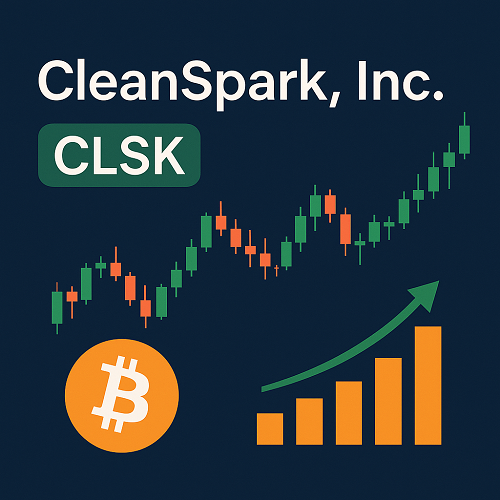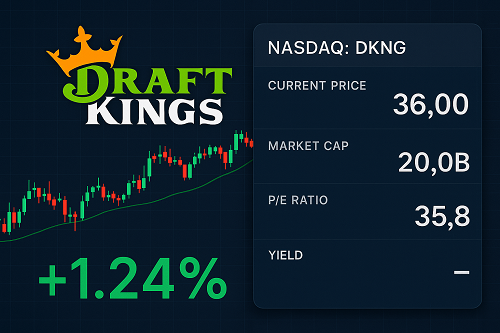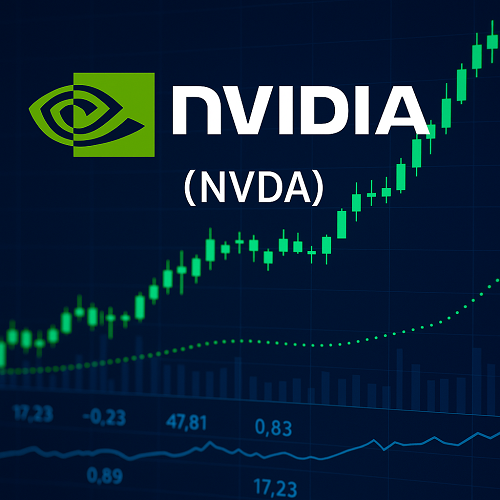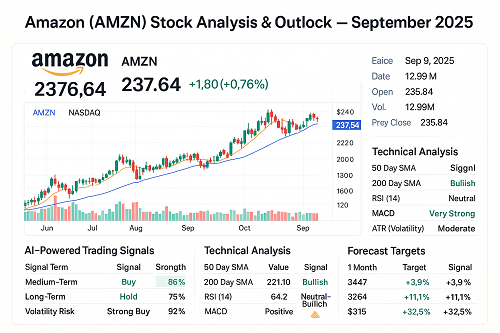CleanSpark, Inc. is a U.S.-based bitcoin mining and energy infrastructure company. It has rapidly scaled its operations in recent years, leveraging low-cost power contracts and growing bitcoin holdings to position itself in what it terms the “compute”-economy.
For investors considering CLSK, the case includes a high-growth business model tied to bitcoin network fundamentals, but also substantial risk – including volatility in cryptocurrency markets, regulatory / energy cost risks and the challenge of sustaining margin as difficulty and halving events evolve.
Key attraction:
- Strong recent growth in hashrate and bitcoin production.
- Vertically integrated model (owning/operating data centres and power contracts) which gives a potential advantage vs. less-integrated peers.
- Solid recent results: e.g., Q3 FY2025 revenue of US$198.6 million, up ~91% year-on-year.
- Growing bitcoin treasury (>12,703 BTC held as of June-30-2025).
Key risks:
- Bitcoin price swings: mining profitability is tightly coupled to BTC price and network difficulty.
- Energy costs, regulatory (including ESG) and infrastructure risk.
- Execution risk: scaling operations, securing power, maintaining ASIC efficiency.
- Valuation: The stock has a high beta and has been subject to speculative momentum.
Overall, CleanSpark represents a high-beta, high-risk / high-potential opportunity: suitable for investors comfortable with cryptocurrency-related equities and growth risk, less so for purely conservative dividend-oriented portfolios.
Business Model & Competitive Positioning
What CleanSpark Does
CleanSpark describes itself as “America’s Bitcoin Miner®”.
Its operations include:
- Owning and operating bitcoin mining data centres across the U.S., selecting locations where energy prices are competitive.
- Deploying large-scale ASIC mining hardware, optimizing for efficient electricity usage (e.g., joules per terahash).
- Holding bitcoin (treasury strategy) as part of its asset base.
- Leveraging infrastructure scale (power contracts, mining fleet, land/data centre leases) to potentially achieve lower cost per bitcoin than smaller miners.
Market & Competitive Landscape
CleanSpark operates in the cryptocurrency mining industry — a niche but increasingly institutionalised segment. Key competitive factors include:
- Hashrate capacity: the faster and more efficient the fleet, the more bitcoin can be mined.
- Energy cost & reliability: mining is essentially compute + electricity; lower cost power boosts margin.
- Scalability & infrastructure ownership: owning data centres or power contracts is a strategic advantage.
- Bitcoin network fundamentals: block rewards, difficulty, halving events — all impact supply and revenue.
- Regulation & ESG concerns: mining operations are under increasing scrutiny for energy consumption and environmental impact.
CleanSpark claims to have achieved > 50 EH/s (exahashes per second) operational hashrate as of June 2025.
In FY2024 it reported hashrate surpassing 33.5 EH/s and targeted 37 EH/s by year end.
These figures place it among the leading publicly-traded bitcoin miners in North America.
Strengths & Weaknesses
Strengths:
- Vertical integration: owning/operating key infrastructure may reduce reliance on third-party lease power or shared facilities.
- Significant scale: larger hashrate gives leverage in cost structure and bargaining power.
- Treasury strategy: owning bitcoin may provide upside exposure independent of mining operations.
Weaknesses / Risks:
- Concentration of business in a highly volatile asset class (bitcoin).
- Energy cost risk: if power prices rise, margin gets squeezed.
- Regulatory/ESG risk: mining operations face increasing scrutiny (environmental, local zoning, grid access).
- Execution risk: scaling operations, maintaining fleet efficiency, dealing with hardware depreciation.
- Valuation volatility: investor sentiment toward crypto-miners can swing widely.
Financial Performance & Key Metrics
Recent Results
In Q3 FY2025 (ended June 30, 2025), CleanSpark reported:
- Revenue: US$198.6 million, up ~91% from US$104.1 million in the prior year period.
- Net income: US$257.4 million (EPS US$0.90) vs. a net loss of US$236.2 million (EPS -US$1.03) a year ago.
- Bitcoin treasury: 12,703 bitcoins held.
- Power contracts: over 1 GW of power contracted.
In FY2024 (ended Sept 30, 2024):
- Revenue: US$378.9 million (up 125% YoY from US$168.4 m).
- Net loss: US$145.8 million (EPS -US$0.69) vs. loss of US$138.1 m prior.
- Adjusted EBITDA: US$245.8 million vs. US$25.0 million previous year.
Monthly KPI update (Sept 30, 2025) reports:
- Operational Hashrate: 50.0 EH/s.
- Bitcoin holdings: 13,011 BTC.
- Peak fleet efficiency: 16.07 J/TH.
- Power under contract: 1.03 GW.
Valuation Metrics & Analyst View
Analyst consensus ratings and targets reveal a range of views:
- For FY2026, one analyst (Chardan Capital) forecasts EPS of US$0.85 and assigns a Buy rating with a US$20 target.
- Other analysts have varied targets, reflecting differing assumptions about bitcoin price and mining margins.
Additional technical metric: the Relative Strength (RS) Rating elevated to 86 (on scale 1-99) — indicating strong recent price performance compared with peers.
Financial Health & Liquidity
CleanSpark’s balance sheet highlights:
- As of June 2025: Cash ~$34.6 million; bitcoin assets ~$1.08 billion.
- Total assets ~$3.1 billion; liabilities ~$954.9 million; equity ~$2.14 billion.
These figures suggest substantial asset backing, though much of value is tied to bitcoin holdings and mining assets which carry market / operational risk.
Investment Thesis: Why (and Why Not) Consider CLSK
Bullish Case
- Leverage to Bitcoin upside: If bitcoin’s price rises significantly, miners like CleanSpark benefit not only from higher revenue per coin but also from bitcoin holdings as an asset.
- Scale / cost advantage: With ~50 EH/s and >1 GW contracted power, CleanSpark may be well-positioned to produce bitcoin at a lower cost per unit than smaller peers.
- Expanding beyond mining: Recent commentary suggests CleanSpark exploring high-performance computing (HPC) or AI-compute uses for its data centres.
- Strong recent earnings momentum: Record revenues, profitability in Q3 FY2025, growing bitcoin treasury.
- Capital markets access: The company has demonstrated ability to access credit facilities (e.g., bitcoin-backed credit).
Bearish Case / Key Risks
- Bitcoin dependency & volatility: Mining revenue and asset values depend heavily on BTC price, network difficulty, halving events.
- Energy & infrastructure risk: Energy price spikes, grid access issues, regulatory ESG constraints may hurt margins.
- Hardware & depreciation risk: ASIC mining hardware becomes obsolete; efficiency matters. Also, maintenance & replacement cycles carry cost.
- Competition / margin compression: As more miners scale globally, cost of entry may increase; difficulty may rise, squeezing margins.
- Valuation risk: Market sentiment toward crypto miners swings dramatically; share price can be subject to speculative flows rather than fundamentals.
- Execution risk: Scaling quickly (data centres, power contracts) introduces operational, regulatory and capital risk.
Suitable Investor Profile
- Suited for growth-oriented investors comfortable with cryptocurrency-linked equities and higher risk/volatility.
- Less suited for conservative income investors searching for stable dividends or low volatility.
- Important to treat as part of a diversified portfolio, not as a large core holding without acknowledgement of risks.
Trading & Entry Strategy Considerations
Technical & Momentum Signals
- The RS Rating of 86 signals that CLSK has out‐performed many peers recently.
- According to some reports, the stock had broken out of a buy zone tied to technical consolidation.
- But when a stock exits its “buy zone”, new entries must be more selective (e.g., wait for pullback or consolidation).
Key Support/Resistance & Volatility
- As a bitcoin-miner stock, CLSK tends to reflect not only its own fundamentals but swings in bitcoin price and mining sentiment — expect higher beta.
- Good practice: monitor bitcoin (BTC) fundamentals, network difficulty, mining cost curves, and power contracts — as these drive mining profitability.
- Risk management: consider size limits, stop-loss levels, and portfolio weighting given the inherent volatility.
Timing and Catalysts
- Positive catalysts: further increase in hashrate, expansion into new power contracts, contract signings, bitcoin price rally, positive regulatory clarity for mining.
- Watch for earnings / monthly updates: CleanSpark publishes monthly mining updates and quarterly results.
- Macro/crypto catalysts: bitcoin market moves, halving events, energy policy/regulation shifts (especially in U.S.).
- Entry strategy: For a new entry, consider waiting for consolidation or pullback to moving averages rather than chasing breakout price.
Valuation Considerations
- Mining businesses are often valued on metrics like cost per bitcoin mined, hashrate growth, bitcoin holdings, power contract terms, and EBITDA margins.
- Traditional P/E may be less meaningful when revenue streams are volatile and tied to crypto.
- Analysts suggest targets in the US$ 20 range (for example) but such valuations assume optimistic bitcoin price + mining margin scenarios.
- Given the high risk, investors should model scenarios: base (bitcoin flat), bullish (bitcoin up), bearish (bitcoin down/higher difficulty).
Key Metrics & Frequently Monitored Data Points
| Metric | Why it matters | Recent figure |
|---|---|---|
| Operational Hashrate (EH/s) | More compute power = more bitcoin mined | ~50 EH/s as of Sept 30 2025 |
| Power under contract (GW) | Securing low-cost electricity gives margin advantage | 1.03 GW (Sept 30 2025) |
| Bitcoin holdings (BTC) | Treasury acts as investment asset & margin buffer | 13,011 BTC (Sept 30 2025) |
| Fleet efficiency (J/TH) | Lower Joules per Terahash = better cost per bitcoin | 16.07 J/TH (Sept 30 2025) |
| Revenue growth (YoY) | Indicates business scaling | Q3 FY2025: +91% YoY revenue |
| Adjusted EBITDA | Mining operations often judged on cash-flow/profitability | FY2024: US$245.8 m |
Outlook & Key Drivers for the Next 12-24 Months
Near-Term Drivers
- Bitcoin price: A sustained rally would boost mining revenue and asset values; conversely a drop hurts.
- Hashrate growth & efficiency gains: CleanSpark’s ability to deploy new ASICs, optimize energy usage, expand power contracts.
- Power cost and contract terms: Renewables integration, grid access, regional regulation.
- Company disclosures: monthly mining updates, quarterly earnings — giving visibility into trajectory.
- Regulatory / ESG factors: e.g., U.S. or state policy changes on crypto mining, carbon/regulation costs, grid prioritisation.
Longer-Term Considerations
- Bitcoin halving events: the reduction in block rewards roughly every four years impacts mining revenue; companies need to scale or reduce cost to compensate.
- Compute diversification: CleanSpark may leverage its data-centre and infrastructure into adjacent high-performance compute (HPC/AI) markets, which could reduce bitcoin-only exposure.
- Global competition: mining operations outside the U.S., innovations in ASICs, changing energy landscapes could erode margin.
- Technological obsolescence: Older mining equipment becomes less efficient; maintaining investment in newest gear is capital-intensive.
Scenario Modelling
- Base case: Bitcoin price remains flat or modestly up; CleanSpark continues growth, margins stable. Stock may rise modestly.
- Bull case: Bitcoin price surges, CleanSpark scales hashrate + efficient power; EPS and valuation expand.
- Bear case: Bitcoin price falls, network difficulty increases, power costs rise; margin compresses, asset write-downs possible.
Risk Factors & What to Monitor
- Bitcoin price risk: If BTC falls significantly, mining profitability collapses.
- Energy/power risk: Natural gas/coal/grid rates rising, or power contracts ending/renewing at higher cost.
- Regulatory & ESG risk: Local bans, tariffs, pollution regulation, grid priority changes could impact operations.
- Mining difficulty & halving: As more miners join network, difficulty rises; reward halves reduce coins earned; cost efficiency becomes ever more critical.
- Hardware risk: ASIC hardware lifecycle, obsolete equipment, maintenance, downtime.
- Execution risk: Scaling too fast, lease problems, grid constraints, project delays.
- Valuation risk: Extreme investor sentiment swings; buoyed by crypto mania, vulnerable to reversals.
- Liquidity/capital risk: CleanSpark holds bitcoin as assets, but those may be illiquid; raising capital may become costly in a downturn.
Conclusion
CleanSpark, Inc. (CLSK) is a compelling but high-risk proposition. Its strong recent performance in revenue growth, hashrate scale, and bitcoin holdings are impressive and give it a solid platform. For investors bullish on bitcoin and comfortable with mining exposure, CLSK offers one of the more established names in the U.S. publicly-traded mining industry.
However, the key caveats are many: dependence on bitcoin price, energy costs, increasing competition, hardware life-cycle issues and larger macro/crypto risks. In short: this is not a “set-and-forget” stock — it demands active monitoring of underlying crypto and energy fundamentals.
If one were to allocate to CLSK, I would recommend sizing it as a tactical or thematic position (rather than a large core holding), keeping a close eye on mining updates, bitcoin price action, power contract renewals and fleet efficiency metrics.
Given the current metrics and the market environment (late-2025), my view is that if bitcoin enters a strong bull-market phase, CleanSpark could outperform. Conversely, if bitcoin remains flat or drops, the downside risk is meaningful.
Frequently Asked Questions (FAQ)
Q: What is CleanSpark’s ticker and exchange?
A: The ticker is CLSK and it trades on the NASDAQ.
Q: What does CleanSpark actually do?
A: CleanSpark owns and operates bitcoin mining facilities and associated power infrastructure in the U.S., and holds bitcoin as part of its asset base. It focuses on cost-efficient mining and scaling hashrate.
Q: What are the key metrics to watch for CleanSpark?
A: Operational hashrate (EH/s), power under contract (GW), fleet efficiency (J/TH), bitcoin holdings (BTC), cost per bitcoin mined, bitcoin network difficulty, bitcoin price, quarterly revenue & EBITDA.
Q: Is CleanSpark profitable?
A: Yes, in the most recent quarter (Q3 FY2025) it reported a net income of US$257.4 million and EPS of US$0.90. However profitability is highly tied to bitcoin market conditions and mining cost efficiency.
Q: What are major risks for CleanSpark?
A: Bitcoin price drops, rising energy/power costs, mining difficulty and halving, regulatory/ESG interventions, hardware obsolescence, execution risk.
Q: Should I buy CleanSpark stock now?
A: That depends on your risk appetite and view of bitcoin and mining. If you’re bullish on bitcoin and comfortable with volatility, CLSK could be worth a position. If you need stability or dividend income, there may be better alternatives. Entry timing should consider technicals, fundamentals and crypto-market backdrop.





 XAUT-USD
XAUT-USD  AMD
AMD  MARA
MARA  SHOP
SHOP  BULL
BULL  CL=F
CL=F